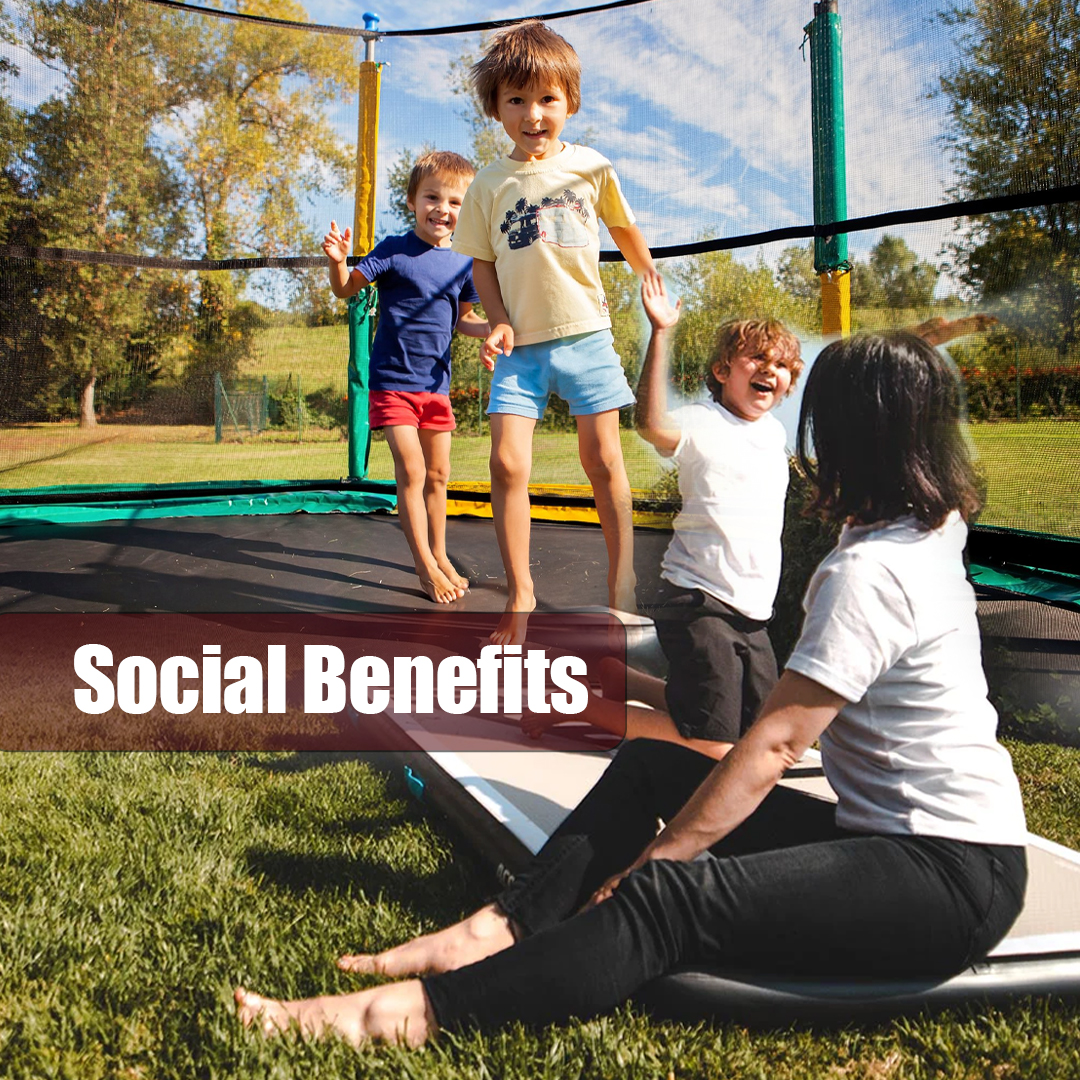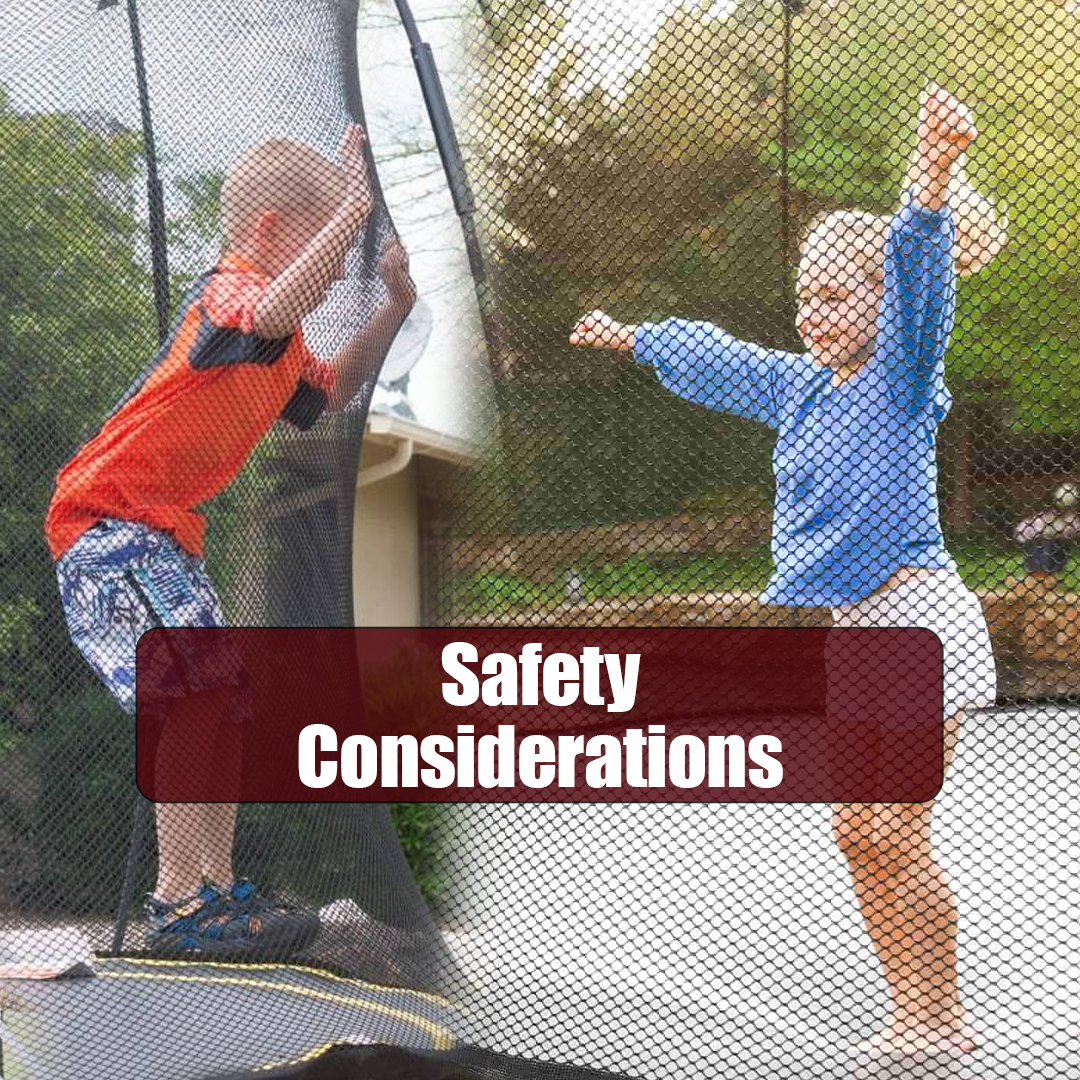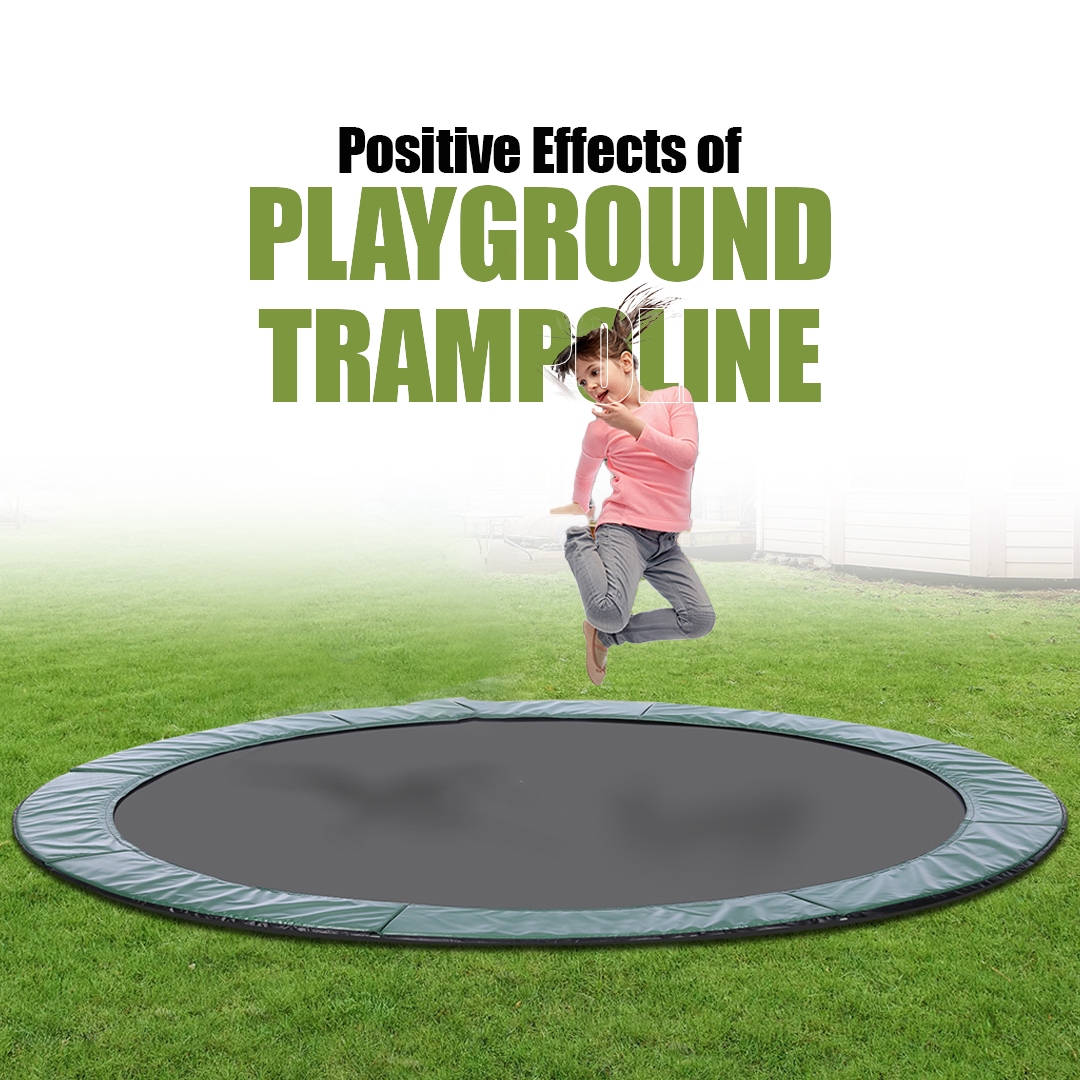While trampoline may look like nothing more than outdoor fun for children, research shows it provides some brilliant health benefits too. From strengthening growing bones and muscles to enhancing balance and coordination, trampolines support children’s physical development in heaps of ways. But the perks don’t stop there.
Table of Contents
ToggleSo next time you see a playground trampoline, think of it as an all-round activity that’s great for children’s bodies and minds. In this article, we’ll explore the science-backed wellness wins trampolining gives children.
In this blog, we will look at some of the positive effects of playground trampoline on children’s health and well-being.
Physical Health Benefits

Cardiovascular Fitness
Jumping on a playground trampoline is a fun way for children to get their heart pumping and improve their cardiovascular health. As children bounce, their heart rate increases, circulation improves and lungs work harder to supply oxygen to their body. Regular trampolining helps strengthen their heart and improve endurance over time.
Muscle Strength
Trampolining works many muscle groups, from legs to core to upper body. As children jump, their leg muscles contract to push them up, then extend to cushion their landing. Their core muscles engage to stabilise their body, and arms are used for balance and to manipulate direction or height. This full-body workout leads to stronger, more toned muscles in children.
Coordination and Balance
Bouncing on a 14ft trampoline helps children develop motor skills and balance that translate to many areas of life. They learn how to control the speed, height, direction, and positioning of their jumps. This challenges their sense of balance and equilibrium. children also practise coordination as they get comfortable performing more advanced bounces, jumps, and tricks. These skills gained through trampolining at a young age help children in sports and recreational activities.
Trampolining provides a variety of benefits for children’s physical health and development. It’s an enjoyable activity that helps them build endurance, strengthen their body, and improve coordination and balance in a fun, low-impact way. By bouncing regularly, children establish healthy habits and skills that will benefit them for years to come.
Mental Health Benefits

Playing on a commercial trampoline has significant benefits for children’s mental health and well-being. As children bounce, their bodies release endorphins, the body’s natural feel-good hormones. These endorphins act as natural painkillers and stress relievers, giving children a sense of relaxation and contentment.
Regular trampolining also leads to an improved mood and reduced feelings of anxiety or irritability in children. The increased blood flow and oxygen circulation that comes from bouncing helps stimulate the parts of the brain responsible for regulating emotions and stress levels. Children who trampoline regularly may find themselves better able to cope with stressful situations and recover more quickly from periods of anxiety, worry, or sadness.
Mastering new tricks and skills on the trampoline leads to a boost in confidence and self-esteem in children. The thrill and excitement of learning a new flip or jump, and the pride in finally mastering it, enhances children’s belief in themselves and their abilities. Children also build resilience by learning to overcome the fear of falling or not mastering a skill on the first try.
Social Benefits

12ft trampolines provide opportunities for children to interact and bond socially. children can have fun with friends while getting exercise. Jumping together helps build teamwork as they create games and routines. Friendships form over the shared enjoyment of trying new tricks and moves.
Develops Social Skills
Trampolining teaches children social skills such as sharing, cooperating, and communicating in a fun, low-pressure environment. children learn how to take turns and be aware of those around them. They gain confidence through practising new skills together and giving each other encouragement and praise. These interactions help children improve their ability to work as part of a team and build meaningful relationships.
Promotes Inclusiveness
Playground trampolines are a very inclusive activity, accessible to children of all abilities. children of varying skill levels can join in, with each child jumping at their own pace. This inclusive nature fosters understanding and compassion between children. Watching others who have different abilities can inspire children to push themselves while also offering help to those who need it.
In-ground trampolines provide so many opportunities for children to grow socially and emotionally. The shared experience of jumping together forms connections between children that lead to new friendships and improved social skills. Children gain confidence in themselves and learn the value of inclusiveness. Overall, trampolining has significant benefits for children’s social and psychological well-being.
Safety Considerations

Safety on a trampoline should always be your priority, especially where children are involved. Proper supervision and maintenance are key.
- Never leave children unsupervised on a rectangle trampoline. An adult should always be present to spot them and ensure safety rules are followed. This helps prevent injuries from collisions, improper landing positions, or bouncing off the trampoline.
- Enforce basic rules like one jumper at a time, no flips or somersaults, stay in the centre of the mat, and no double bouncing. These precautions reduce the risk of broken bones, sprains, strains, and head injuries.
- Inspect the trampoline before each use and perform regular maintenance checks. Replace any worn, damaged, or missing parts immediately. Things like tears in the mat, broken springs or frame padding, and unstable bases can lead to injuries.
- Choose frame pads that cover the springs, hooks, and frame. The pads should be thick, securely attached, and in good condition. They prevent jumpers from landing on or getting caught in the springs and metal frame.
- Consider safety nets or mesh enclosures. They provide an extra barrier around the trampoline to prevent falls off the sides. Look for nets specifically designed for trampolines that securely attach to the poles.
- This avoids collisions and ensures each child has enough room to jump and land safely.
By following these essential safety guidelines, trampolining can be an enjoyable activity for children that promotes health and development. However, without proper supervision and maintenance, performance trampolines can quickly become dangerous, so safety should always be the top priority.
Tips for Maximising Benefits
To get the most out of trampolining for your children’s health and development, try to schedule in regular bouncing sessions, say 2-3 times a week. Even just 15-30 minutes at a time can provide great benefits.
Some ideas to make trampolining fun include:
- Playing catch: Gently toss around a beach ball, balloon, or soft toy. This helps with hand-eye coordination and balance.
- Doing exercises: Try simple exercises like bounces, seat drops, hands, and knees bounces or pike jumps. This disguises fitness as fun games.
- Playing follows the leader: Take turns leading the group in actions like spins, knee bounces, or seat drops. children can get creative by adding in silly moves!
- Timing competitions: See who can do the most seat drops, knee spins, or waist twists in 1 minute. Keep things lighthearted and non-competitive.
- Learning new skills: Teach children basic trampolining skills like knee bounces, seat drops, pike jumps, or front drops. Start with the basics and build up gradually.
For the best results, join in the fun yourself! Trampolining with your children is a great way to bond and sets a positive example. You’ll also gain benefits like improved balance, flexibility, and cardiovascular fitness. Limit screen time and encourage outdoor play whenever possible. Fresh air and natural light have huge benefits for health, mood, and development.
Most of all, keep trampolining sessions lighthearted and fun. While skills and games provide mental and physical challenges, don’t turn it into a chore. Let children be children – laughter and silliness should be encouraged! With regular play, trampolining can boost health, development, and wellbeing for children and parents alike.
Conclusion
In short, bouncing on a playground trampoline is great fun for children and it also makes them healthier and happier. It’s like exercising without feeling like you’re exercising! When children bounce, it makes their hearts stronger and their muscles tougher. It also helps them get better at balancing and moving their bodies. Bouncing on a trampoline can make children feel less stressed and more cheerful because it releases special chemicals in their bodies that make them feel good. Plus, when they learn new tricks, like jumping high or doing flips, it makes them feel really proud of themselves. Playground trampolines are also good for making friends and playing together. But it’s important to be safe by having an adult watch and making sure the trampoline is in good condition.
FAQ's
Why should children under 6 not use a trampoline?
Children under the age of 6 should avoid using trampolines due to safety concerns, as their bodies are still developing, and they may be more susceptible to injuries from jumping.
What age can a child go on a trampoline?
It is generally recommended that children be at least 6 years old before using a trampoline. At this age, they are typically more physically developed and better able to handle the bouncing motion safely.
What are the safety guidelines for trampolines?
Safety guidelines for trampolines include ensuring the trampoline is set up on a flat surface away from obstacles, using safety nets and padding to cover springs and edges, and supervising children while they jump.
Why do you need clearance around a trampoline?
Having clearance around a trampoline ensures there is enough space for safe jumping and landing, reducing the risk of collisions with nearby objects or structures and minimising the potential for injuries from falling off the trampoline.
How do I keep my child safe on a trampoline?
To keep your child safe on a trampoline, always supervise them while they are jumping and enforce safety rules such as no somersaults or rough play. Ensure the trampoline is properly assembled, with safety nets and padding in place, and teach your child to land safely on their feet or bottom.
DON'T MISS...
- How To Pick The Perfect Playground Trampoline For Your Garden
- 5 Strong Reasons to Add a Commercial Trampoline in Schools and Universities
- Strong Reason to Choose a Bespoke Trampoline Over a Standard One
- Everything You Need to Know About Trampoline Pads
- Discover 7 Surprising Ways to Transform Your Old Trampoline to New





